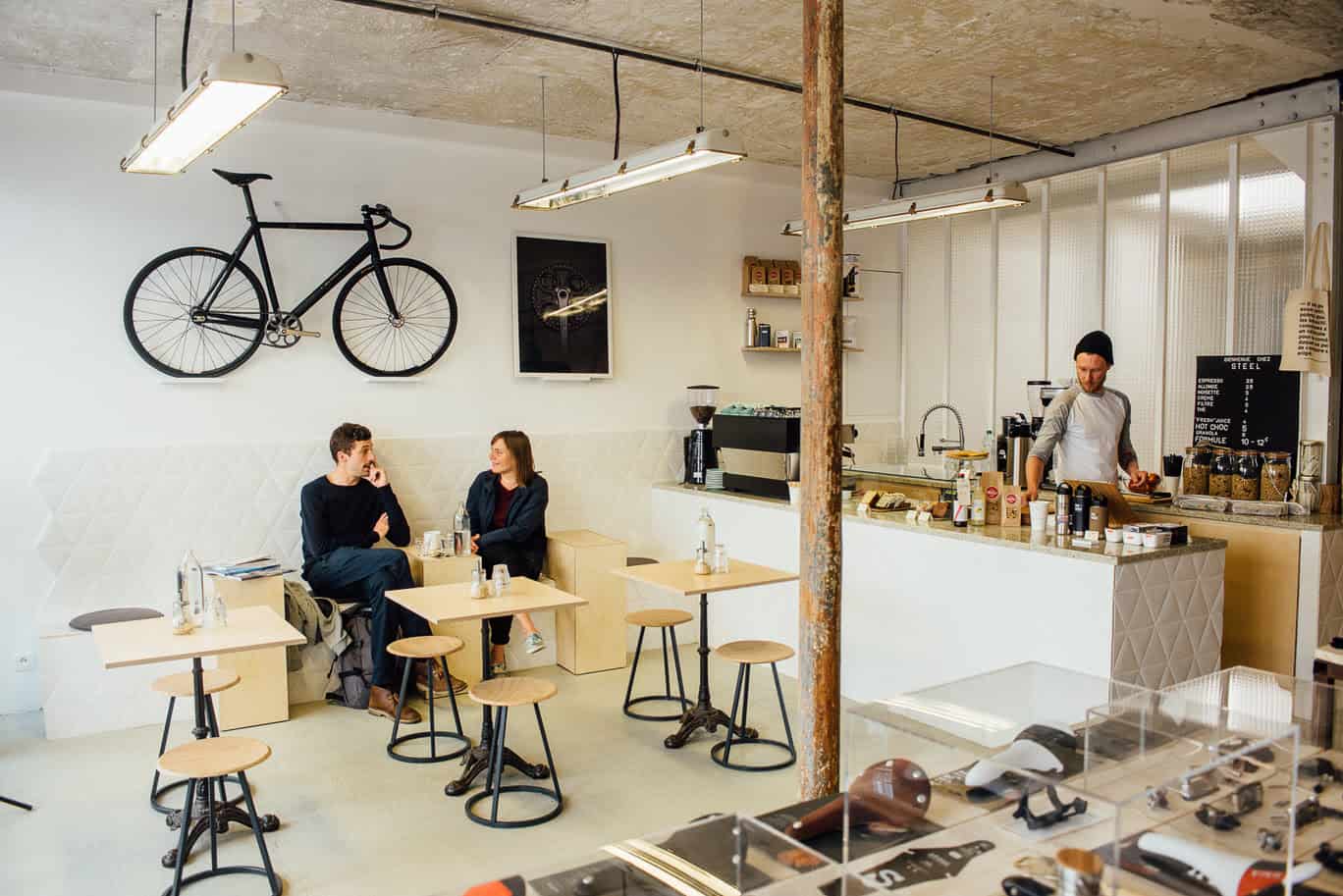Warm? Friendly? Spontaneous? These aren’t perhaps the first words that spring to mind when describing the typical Parisien. However, I can assure you that once you learn to greet and meet like a local, the slightly frosty exterior slowly begins to melt.
The bonjour
In Paris it’s essential to say bonjour many times each day. A Parisian lives and breathes bonjours. To foreigners this may seem excessive, but barge into a shop, skip the bonjour and see what happens. French customer service, already suffering in the image stakes, reaches new levels of indifference.

If, like me, you work in a large French company this situation can spiral dangerously and risks occupying a disproportionate part of your already coffee-break-filled day. I’ve come to dread lifts: not only is the bonjour compulsory on entering, the bonne journée (have a nice day) is also necessary on exiting. Et oui, this applies each and every time someone hops in or out. Even though my office is on the 5th floor, I’ve started taking the stairs!
Please note that the bonjour shouldn’t be too cheery or effusive for fear of rippling the careful air of nonchalance.
The ça va?
In many cases the bonjour is accompanied by the ubiquitous ça va? However, don’t be misled into thinking that this seemingly friendly question implies sincere concern for l’autre. To be cruelly honest, this phrase is utterly meaningless. Unaware of this harsh reality on arriving, I’d enthusiastically embark on long descriptions of my mood, latest activities and general state of well-being. These torrents of emotion were met by incomprehension, silence and nervous smiles. I’ve since learned that the correct response is a brisk ça va, et vous/toi? On reflection, perhaps this is no bad thing; otherwise reaching my desk would become a task of Herculean proportions.

The bise
To bise or not to bise, that is the question. Parisians are almost as enthusiastic about kissing as they are about bonjour-ing. Before attempting to integrate this highly French greeting, it is worth bearing in mind that:
– It is perfectly acceptable to bise people you’ve never met before. However, this the-more-the-merrier attitude doesn’t extend to work contexts (possibly to prevent lip and/or cheek erosion).
– It’s customary to land two bises. However, if you venture out into the far reaches of province this may increase to 3 or even 4!
– To avoid nose bumping, remember that the kisses usually go from left to right (although this being France, exceptions and rebels abound).
– When greeting large groups of people (e.g. at picnics & soirées) individual bises are required both on arrival and departure. I highly recommend getting there early and leaving late. Under these extreme circumstances, I’m willing to forgo ‘being Parisienne’ togive a friendly and collective wave.
I admit that it can take a while to cultivate the nonchalant attitude required to pass for a local. But, with a little effort and a lot less enthusiasm, you’ll soon be ready to bonjour with the best of them.
Courage and bon bise-ing!

Related Links:
- Looking for a pied-à-terre, investment property, or a more permanent place to call home? Check out our latest Paris apartments for sale.
- Want to assimilate further? Read what you need to know about restaurant and market lingo in Paris.
- Wondering how living in Paris changes you? Find out 5 habits one writer adopted after living in Paris.
Written by Victoria Wall for HIP Paris. Looking to travel? Check out Plum Guide and our Marketplace for fabulous vacation rentals in Paris, France or Italy. Looking to rent long or short term, or buy in France? Ask us! We can connect you to our trusted providers for amazing service and rates or click here. Looking to bring France home to you or to learn online or in person? Check out our marketplace shop and experiences.





RELATED ARTICLES
What to do on Bastille Day in Paris
by
Diana Liu
Ice Cold Drinks in Paris
by
Forest Collins
Summer in Paris: Top Spots to Tan in the City
by
Lory Martinez
Paris’ Best Hidden Gardens
by
Lily Heise
Paris in July 2025: Events, Exhibitions, The Outdoors & More
by
Zoe Adams
Square Spotting: Paris’s Prettiest Squares for Summer
by
Marissa Wu
Moving to Paris: The Reality Behind the Dream
by
Shiva Backhaus
Father’s Day Gifts for Francophiles
by
Zoe Adams
What to do in Paris in June
by
Kathryn Kinley
Living, Loving, Learning: Starting a New Life in Paris
by
Marjorie Preval
A Local’s Guide to the 3rd Arrondissement: Life in the Haut-Marais
by
Zoe Adams
Mother’s Day for Francophiles – Last Minute Gifts
by
Caroline Camp
Sweepstakes Alert: Win a Week in a Paris Apartment
by
Erica Berman
Peek-a-boo: Traveling To Paris With Kids
by
Emily Dilling
Paris in May: Things to Do, Weather, Culture, Sports & More
by
Reagan O’Brien
Rue de Lévis: A Market Street in Paris’s 17th Arrondissement
by
Yvonne Hazelton
What to Wear in Paris in Spring
by
Caroline Camp
Marais Apartment For Sale, Steps From Place des Vosges | Historic Views & Luxury
by
HiP Paris
Paris Like the First Time, Again
by
Bryan Pirolli
What to Do in Paris in April: Events, Warmer Weather, Gardens and More
by
Reagan O’Brien